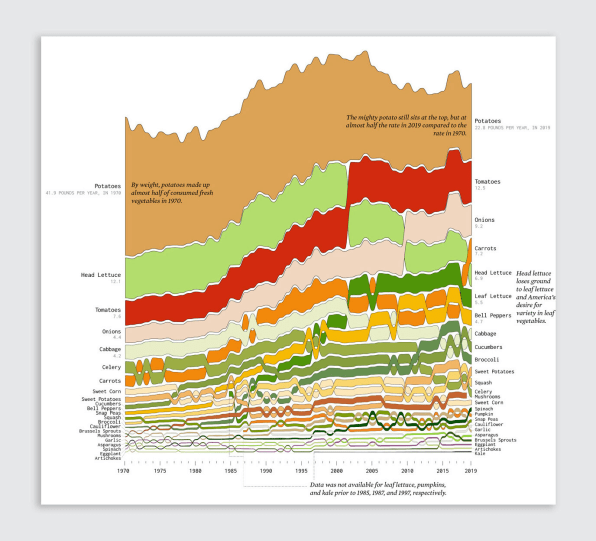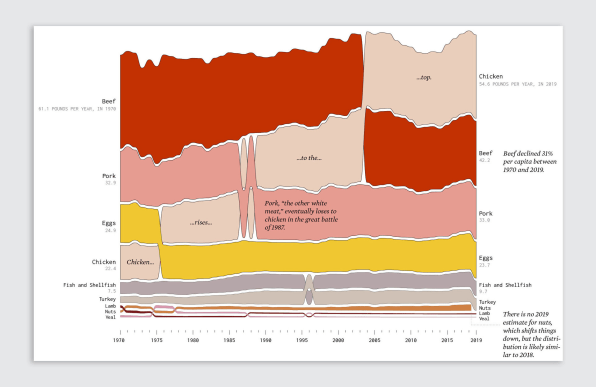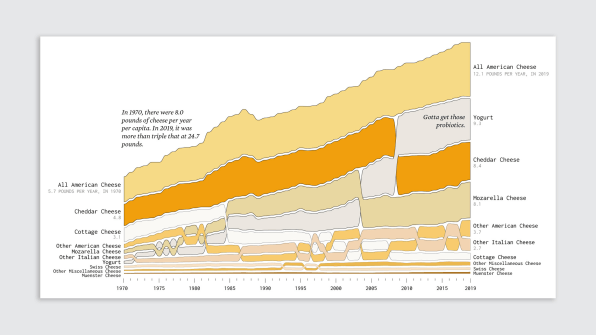Our diets have changed over the past 50 years, but meat still dominates.

Over the course of the past few decades, Americans have discovered Sriracha, ditched diet pop, and obsessed over chicken sandwiches. These food trends tend to be big stories, and have been relatively easy to track.
But truthfully, each of these stories only captures a tiny snapshot of the bigger picture of what Americans eat. The USDA has followed the consumption of more than 200 different food items since 1970, ranging from veal to grapefruit. And data visualization designer Nathan Yau recently transformed five decades of American eating into a series of delightful timelines that depict a far more nuanced look at our diet.
He broke the data into six categories: proteins, vegetables, fruits, dairy, grains, and added fats. The items on top are what we consume the most, and the bottom, what we consume less of. These colorful stacks, which correspond with the real food colors, are piled high like sandwiches filled with data.


Beyond the dominance of chicken, some of our favorite foods are potatoes (22.8 pounds per year), bananas (13.9 pounds per year), and . . . ugh . . . American cheese?!? (12.1 pounds per year). Yet while we eat more cheese than ever, we’ve seen milk consumption plummet since the ’70s.

Oranges, you’d better be careful. Avocados are coming for you next.
"eat" - Google News
June 11, 2021 at 05:00PM
https://ift.tt/2TihzRe
Co.Design Americans still eat way too much meat. This infographic proves it - Fast Company
"eat" - Google News
https://ift.tt/33WjFpI
https://ift.tt/2VWmZ3q
Bagikan Berita Ini














0 Response to "Co.Design Americans still eat way too much meat. This infographic proves it - Fast Company"
Post a Comment